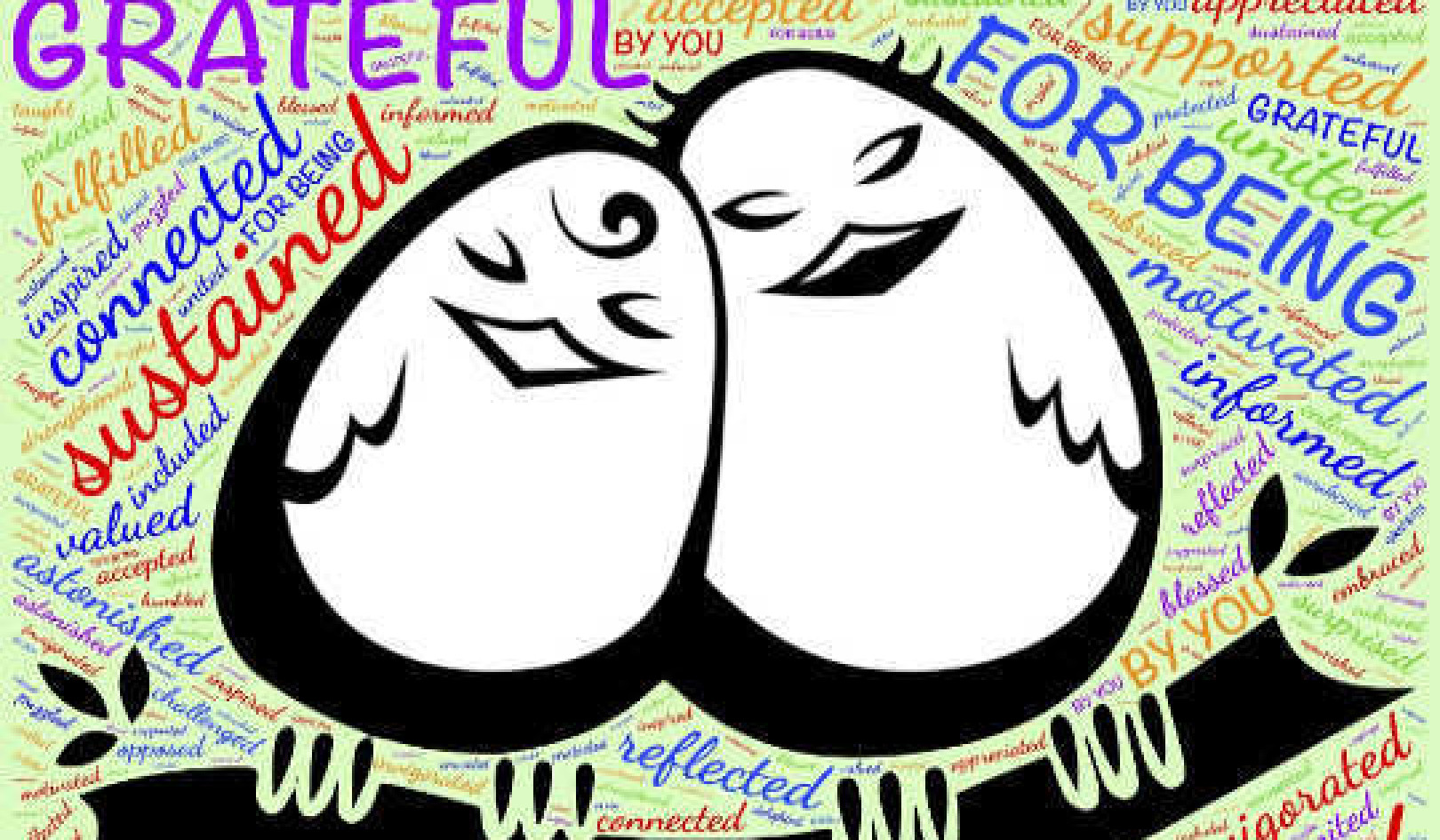
Ultimately, as children, no one gets all their needs met, everyone develops fear buttons, and we all avoid or cover up our button reactions with control patterns. This is nothing to be ashamed of.
It’s really important to be able to name your control patterns and fear buttons and accept them as part of the human condition. When we name things that have been largely unconscious, those things have less power over us.
This section helps name some of the most common control patterns. Each item in the list below describes a behavior. Identifying the behaviors that you exhibit will help you notice when you are using a control pattern. Then you can choose your response rather than reacting automatically. You can step back and say to yourself, “I’m doing it again,” or “I’m in a pattern here.”
Take Stock of How You Communicate
Once you recognize a control pattern, you are better able to look beneath this behavior for your authentic feelings and needs.
In the list of behaviors below, check off any you recognize in yourself. You can also do this as a way to identify control patterns you see in your partner (or former partners). If you feel particularly courageous, ask your partner which of these behaviors he or she observes in you. An unconscious pattern may be invisible to you, but it can impact your partner and limit trust and intimacy.
Most people find a dozen or more behaviors on this list that they recognize in themselves. Use this knowledge to identify how you may be unintentionally triggering reactivity or mistrust in your partner.
You can also find this exercise in the online workbook’s “Control Patterns” section (available at www.fiveminuterelationshiprepair.com).
- Replying too quickly rather than taking in what was said
- Obsessing over what you did wrong or might have done wrong
- Obsessing about a decision you need to make
- Before taking action, reviewing over and over what could go wrong
- Taking action or jumping into a situation impulsively, without assessing consequences
- Giving gifts or favors in order to win approval or acceptance
- Anticipating a partner’s needs as a way to avoid some imagined negative consequence
- Trying to “help” or “improve” a situation or person instead of expressing your feelings
- Making sacrifices for others, secretly hoping they’ll do the same for you
- Asking indirectly for what you want, as in, “Wouldn’t you like to go out for dinner?”
- Putting on an act in order to look good or maintain a positive image
- Blaming your mood or emotional state on your partner
- Justifying, overexplaining, or defending yourself when someone gets upset with you
- Reframing things as “for the best” to avoid painful feelings (either your own or another’s)
- Retreating into a world of your imagination, fantasizing about “something better”
- Lying or withholding information to keep the peace
- Thinking “this is not a big deal” (to minimize or ignore an important issue)
- Staying silent or saying, “I’m fine,” or “Nothing’s wrong,” when you are displeased
- Walking on eggshells to avoid upsetting a partner
- When someone brings up a past upset, pushing to move forward and “let go” of the past
- Agreeing too quickly before checking in with yourself about your own needs
- Telling people what they want to hear while suppressing your needs or opinions
- Making a joke or cute remark in order to laugh off and avoid your deeper feelings
- Assuming you hear criticism from others when someone does not mean to be critical
- Suspecting hidden agendas and double messages, or doubting what you hear
- Jumping to conclusions about what someone means
- Framing a problem or issue in the most pessimistic or negative way
- Giving more information or talking more than is asked for or needed
- Filling up silences with irrelevant chatter
- Overgeneralizing as a conversational habit, talking in platitudes
- Instead of staying focused on one issue, elaborating a whole list of issues
- Giving advice or making helpful suggestions instead of just listening
- Taking a long time to say things, being “thorough,” covering all contingencies
- Bringing up the past and going over the same topic repeatedly
- Repeating what you’ve already said (when this is not needed)
- Telling others what they should do (instead of feeling how their actions affect you)
- Obsessing about how things should be or how the other person should be
- Lecturing or preaching with a superior tone
- Habitually correcting the other person, arguing the point, debating the facts
- Labeling, name-calling, or judging the other person (instead of feeling your upset)
- Acting angry, forceful, or indignant to get the upper hand
- Taking an “it’s my way or the highway” stance
- Using self-deprecating preambles, such as, “I’m no expert, but...”
- Questioning like an interrogator, demanding explanations
- Asking a question and then answering it yourself before the other has a chance
- Getting sullen or sulking, muttering to yourself
- Snickering or laughing to oneself in a judgmental or superior way
- Rationalizing, intellectualizing, or using logic to avoid emotions
- Protecting yourself from intrusions or demands by avoiding the other person
Feeling Safe Enough To Reveal Our Needs, Wants, and Deeper Emotions
As you may have noticed, all the behaviors in this list are motivated by a wish to avoid experiencing uncomfortable or insecure feelings. They all hide what you are really feeling or wanting — from yourself and from others. The fact that we frequently use such control patterns indicates how often we do not feel safe enough to reveal our needs, wants, and deeper emotions. These patterns emerged in childhood, when we learned that expressing ourselves vulnerably did not work or just left us feeling even more alone.
Now, as adults, we find ourselves in relationships that in some ways reflect our early experiences in life. But now, armed with greater self-awareness, we can help each other heal from such unfortunate programming. We can become interested and curious about what our control patterns are and what they are designed to protect us from. We can be alert to when we use these to cover up a sense of vulnerability or the fact that we are triggered.
Identifying our control patterns gives us new personal power and new options for relating more intimately and safely. We can learn what our real needs are underneath our attempts to feel in control. We can discover how letting ourselves feel our frustrations, fears, or pains can help us know our true needs and take appropriate action.
Copyright © 2015 by Susan Campbell and John Grey.
Reprinted with permission from New World Library.
www.NewWorldLibrary.com
Article Source:
 Five-Minute Relationship Repair: Quickly Heal Upsets, Deepen Intimacy, and Use Differences to Strengthen Love
Five-Minute Relationship Repair: Quickly Heal Upsets, Deepen Intimacy, and Use Differences to Strengthen Love
by Susan Campbell and John Grey.
Click here for more info and/or to order this book.
About the Authors
 Susan Campbell, PhD, trains coaches and therapists throughout the United States and Europe to integrate the tools in Five-Minute Relationship Repair into their professional practices. In her own practice, she works with singles, couples, and work teams to help them communicate respectfully and responsibly. The author of Getting Real, Saying What’s Real, and other books, she lives in Sonoma County, California. www.susancampbell.com
Susan Campbell, PhD, trains coaches and therapists throughout the United States and Europe to integrate the tools in Five-Minute Relationship Repair into their professional practices. In her own practice, she works with singles, couples, and work teams to help them communicate respectfully and responsibly. The author of Getting Real, Saying What’s Real, and other books, she lives in Sonoma County, California. www.susancampbell.com
 John Grey, PhD, is a relationship coach specializing in intensive couples retreats. He also trains couples therapists in a state-of-the-art approach that integrates the latest neuro-science and attachment research. He has taught communication workshops at Esalen Institute, University of California at Berkeley, Stanford University, and Scripps Institute. He lives in Sonoma County, California. www.soulmateoracle.com
John Grey, PhD, is a relationship coach specializing in intensive couples retreats. He also trains couples therapists in a state-of-the-art approach that integrates the latest neuro-science and attachment research. He has taught communication workshops at Esalen Institute, University of California at Berkeley, Stanford University, and Scripps Institute. He lives in Sonoma County, California. www.soulmateoracle.com
Watch a video/interview with the
About The Author
Quickly Heal Upsets with FIVE-MINUTE RELATIONSHIP REPAIR




























